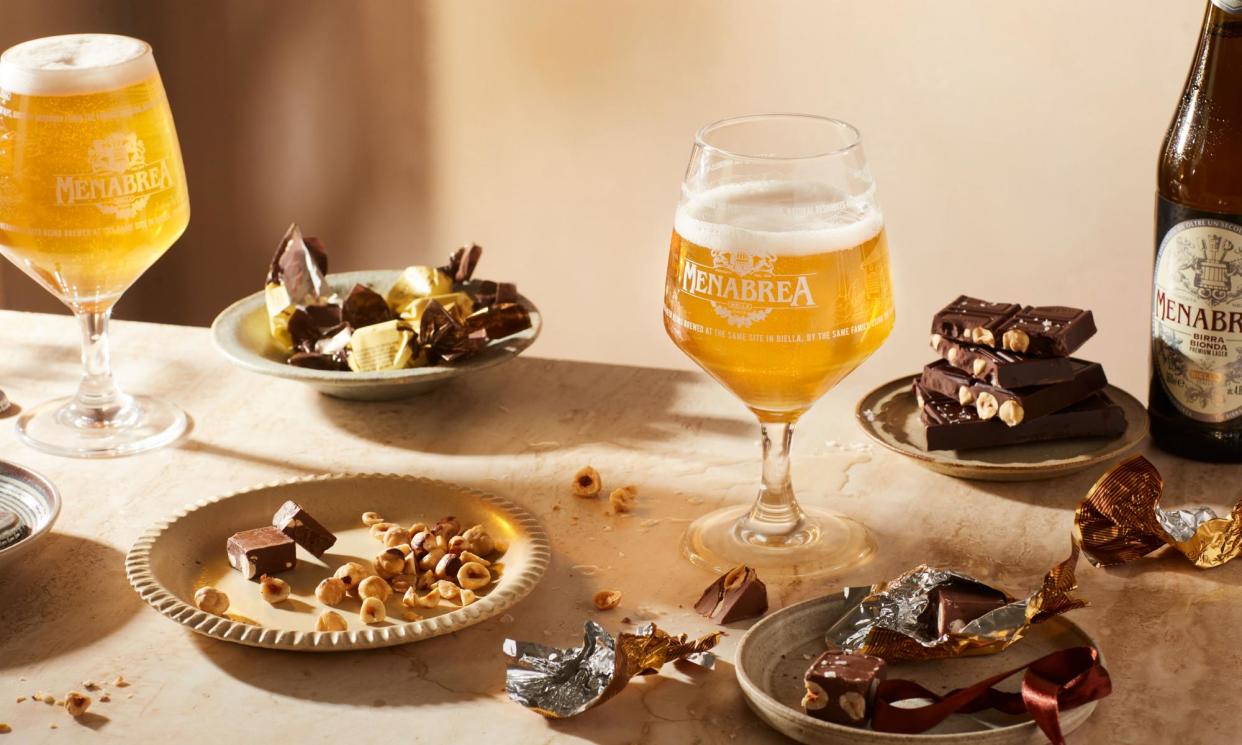Hazelnuts, truffles, or chocolate: what to pair with … Italian Alpine beer

The Italians have been drinking Menabrea beer since before they were Italians. The first cask was brewed and sold by Giuseppe Menabrea in 1846 – a good 15 years before the foundation of the unified Italian state. And he would still recognise his brewery today – now in the fifth generation of his family – nestled at the foot of the Alps in the picturesque northern Italian town of Biella, in the Piedmont region.
With the distinction of being the oldest continuously produced beer in Italy, Menabrea stands for continuity, quality, tradition and flavour. Its flagship Birra Bionda (pale lager) is still made to the original recipe: pure, soft water; barley malt; hops; brewer’s maize, giving the beer its rich golden colour; and a bottom-fermenting yeast – the type Menabrea used in his original casks.
Menabrea is typical of the Italian Alpine beer style: fresh, with citrus and Alpine flower notes to begin with, underpinned by a solid base of malt and hops that give it a nutty, earthy flavour redolent of the forest floor. In fact its flavours are so linked to its place of origin that it pairs well with local food born of the same soil.
Tempted to try it for yourself? Here are some of my pairing choices for this iconic Italian birra …
The aperitivo
Menabrea’s hoppy side makes nuts the perfect accompaniment for an aperitivo. A particularly good pairing is Nocciola Piemonte IGP, the local Piedmont hazelnuts that have EU protected status. The variety, tonda gentile trilobata, is appreciated for its clean, earthy flavour, and is suitable for toasting. One of the most famous production areas is in the vicinity of the town of Langhe, so look for the name when buying.
The pasta
Piedmonte’s “white gold”, the tartufo bianco d’Alba (white truffle from Alba), marries perfectly with Menabrea’s “liquid gold”. Prized as much for their exquisite flavour as their rarity, the peppery truffles are forest foraged in the traditional manner by one man and his dog. White truffles are usually served grated over simple pasta dishes. An all-Piedmontese combination would be to sprinkle the truffle over agnolotti del plin (pasta parcels stuffed with cabbage and beef), so-called for the method of making them – plin means pinched in Piedmontese. Serve the pasta swimming in melted Piedmontese butter to really accentuate Menabrea’s rich, malty, hoppy taste.
The main
Vitello tonnato – thinly sliced veal or beef served chilled in a delicate tuna, egg, anchovy, lemon juice and caper sauce – has been gracing Piedmontese summer tables since time immemorial. This iconic dish is supported very well by Menabrea’s lemony, flowery notes, which accentuate and complement the lemon juice in the sauce. Perfect for a romantic dinner alfresco.
The sweet
Another really superb pairing is Menabrea and chocolate. When you put the two together, the beer steps back a little and showcases the intensity of the chocolate, which in turn gives prominence to Menabrea’s citrus and flower tones. Piedmontese chocolate tends to be smooth and creamy, such as the renowned gianduja (or gianduia) from Turin. Instead, I’d recommend sourcing an intense dark chocolate, such as Amedei Toscano Black 70%, which hails from Tuscany.
Enjoy the authentic taste of Piedmont, and Alpine Italy, with Menabrea. Find your nearest Menabrea stockist at menabrea.co.uk

 Yahoo News
Yahoo News 
